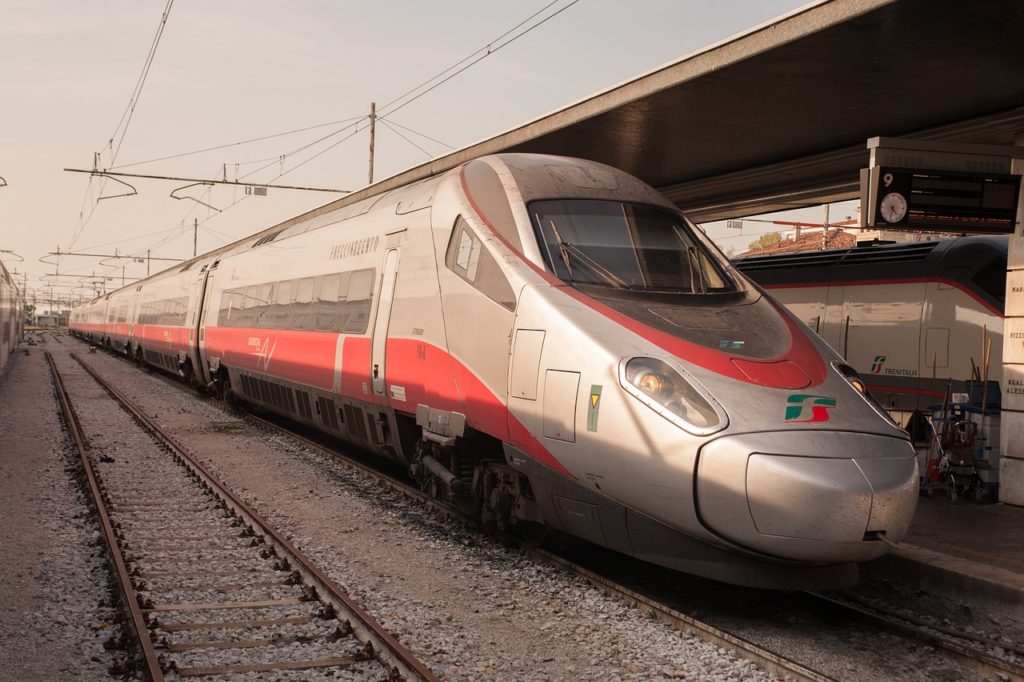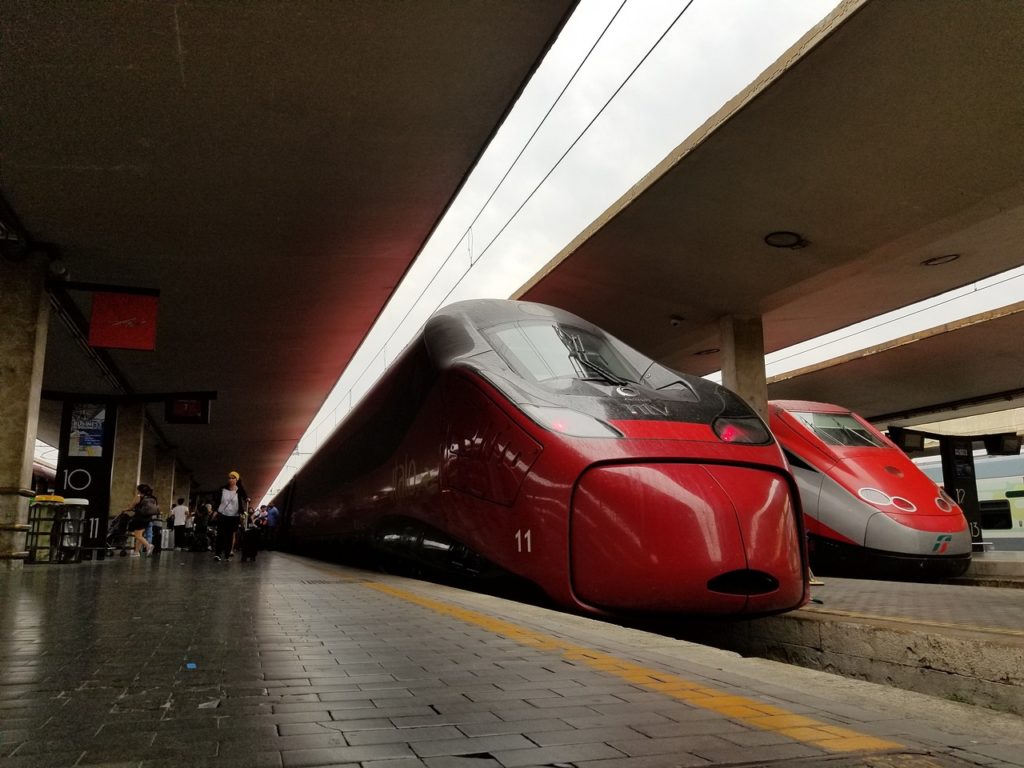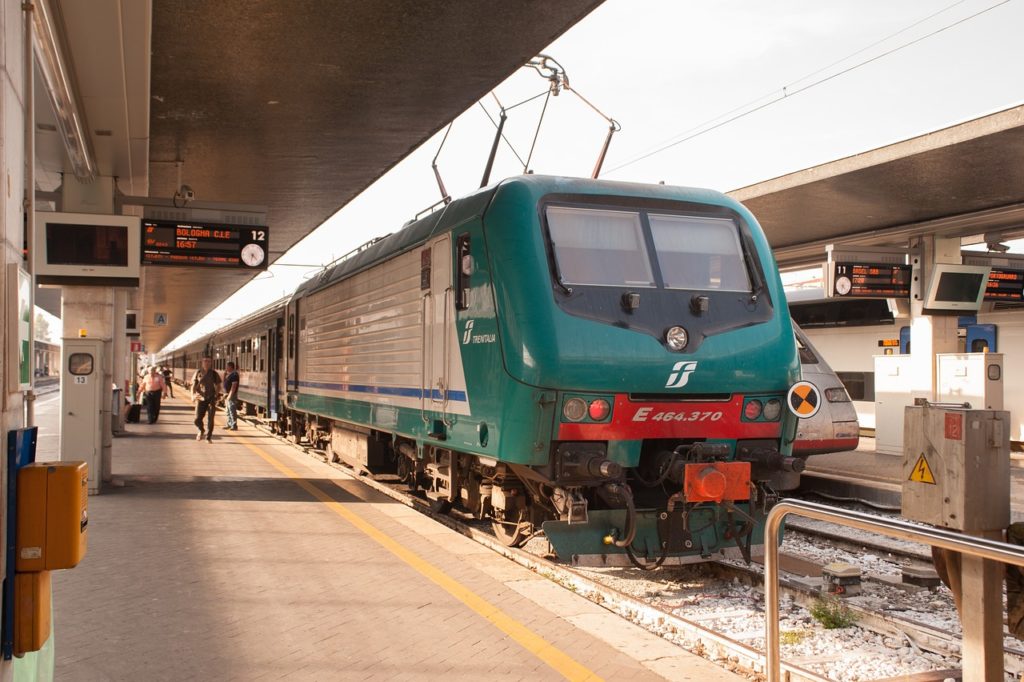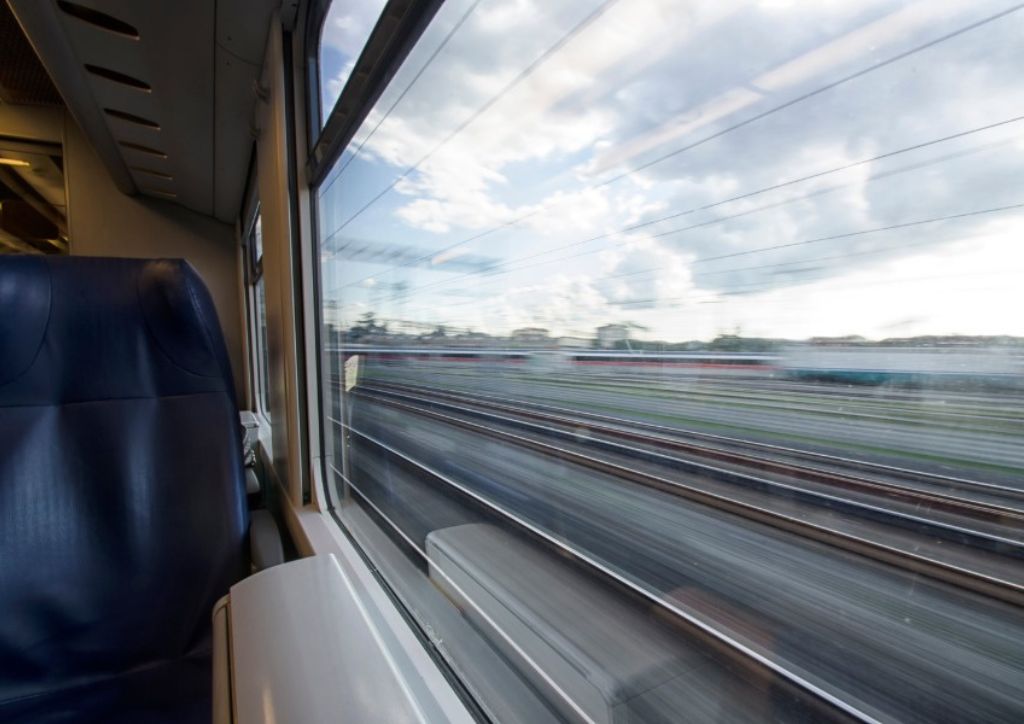From Florence to Rome by train. Tips and tricks from a local
Rome and Florence are two unmissable stops during a trip to Italy, and they are quite close to each other. The best way to move from one city to another in Italy is by train, and in this post I will explain how to go from Florence to Rome by train (and vice versa).
Let me tell you that trains in Italy reach all cities and towns, except very small and remote villages. They are very frequent, there are both high-speed trains and very cheap regional trains, and they are also generally on time. In Italy you can go by train almost everywhere!
If you don’t plan doing a road trip, or visiting remote places and villages, you won’t really need a car. In case you want to travel by car instead, read my tips for renting a car in Florence and driving around Italy. If you want to go from Florence to Rome by road but you don’t want to bother driving, you can book a transfer with a private driver.
How to get from Florence to Rome by train
Going from Florence to Rome by train is very easy, and with my tips you will have no problem moving around Italy, and dealing with different railway stations, train companies and fares. There are many trains connecting Rome and Florence every day, both high-speed and slow, but let’s start with the basics: stations.
Big train stations in Italy are usually crowded, messy and infested with pickpockets. We got used to that craziness but I can understand that they can be overwhelming for foreigners, sometimes. You can buy tickets at the train stations, there are both counters and vending machines. Just plan some extra time for that. But I recommend to book your train tickets online for two reasons:
- Being a last minute booking, you’ll find less availability and higher fares.
- You will avoid the hassle of buying tickets at the train stations, wasting time in line at the ticket counter or at vending machines while watching your back from pickpockets.

Train stations in Florence
Florence has two train stations in the city (there are also some smaller ones in the suburbs, but you won’t have need them, only a few local trains stop there):
Firenze Santa Maria Novella – is the main railway station in Florence, located in the center, just 5 minutes walk from the cathedral. This is where most of the high-speed and regional trains depart and arrive. High speed trains are leaving from platforms between 8 and 12, and the ones going south (so to Rome) are usually stopping on platforms 8, 9 and 10. There is a shopping centre in the underground level of the station.
Firenze Campo di Marte – located about 3 km east of Santa Maria Novella, it is a smaller station and mainly served by local trains that reach the countryside around Florence. Apart from those, some regional and Intercity trains that reach Rome also stop here. You can get to Firenze Campo di Marte station from Santa Maria Novella with buses 7, 10, 17, 20. The train station only has the ticket office (with counters and vending machines), a bar and a tobacco/newspaper shop.
Train stations in Rome
Rome has many railway stations, but those that interest travelers are only two: Roma Termini and Roma Tiburtina. They are the two most central stations in the city, and where all the trains from Florence and other major Italian cities stop. Both train stations are pretty safe, but the areas around them can become dangerous at night, especially Roma Termini. So please be careful and avoid getting there on foot after dark.
Roma Termini is the largest and most important, and is more central than Roma Tiburtina. The latter is however very convenient, and in any case the two stations are connected to each other by the underground line B in 9 minutes.
High-speed trains from Florence to Rome
In Italy there are two high-speed train companies: Italo and Trenitalia. Personally I slightly prefer Italo because I find better rates more often, but they are both valid, actually there are no big differences. Both have free wifi (even if is not working most of the times), restaurant cars, bar service. Just pick the one that offers the best price and time for your trip.
When booking with Trenitalia, keep in mind that Trenitalia high speed trains are called Frecce (Frecciarossa, Frecciabianca, Frecciargento). Trenitalia also have low speed trains (regional and inter-regional ones), so if you want to avoid the slower ones, select the “only Frecce” option during your search.
The journey from Florence to Rome with high-speed trains takes about an hour and 35 minutes, and there are no intermediate stops.
The ticket price varies from 28 euros (cheapest fare, standard class) to 130 euros (executive class). There are often special offers and discounted fares, so the tickets might be even cheaper. There are several classes, but all have free wifi and power outlets. The most luxurious classes have welcome service, reclining seats, more leg space and other amenities.

There are also different fares:
- Super Economy / Low Cost – the cheapest fare, which does not allow cancellations or changes.
- Economy – there are no refunds for cancellations, but you can change your booking for an extra fee.
- Basic / Flex – it is possible to cancel (with a full refund) and modify your reservation by paying only the difference in price.
In case of high-speed trains, the earlier you book the better, because the cheapest fares are the first to sell out.
Slow, Regional Trains from Florence to Rome
Regional and Intrercity trains are much slower, both because they travel at a lower speed and because they make many stops along the way.
- The journey time from Florence to Rome with direct regional trains is about 3 hours and 45 minutes.
Most of the regional trains between Rome and Florence are direct trains, there is no need to change trains at an intermediate station.
The price is around 23 euros for second class tickets. First class on Italian regional trains almost doesn’t exist anymore, but even if there was, in my opinion it’s not worth it, it’s practically the same as second class.
Seats are unassigned on regional trains, so first-come, first-served. Even if you have booked your ticket well in advance, it can happen that the train is overcrowded and you cannot find seats. This happens especially on trains used by commuters.
Intercity are low-speed trains that travel long distances, crossing Italy from north to south and making many intermediate stops. These are the trains I like the least, because they are often very old and are the ones that are most delayed. I honestly advise against choosing regional trains and Intercity (unless you want to stop along the way, at one of the intermediate stops). The price difference with high-speed trains is minimal, and it’s not worth wasting so much time for a journey that can be way faster.

Intermediate stations between Rome and Florence where you can stop
The only really good reason to use regional trains instead of high-speed ones is to be able to stop along the way and visit some other Italian city. Along the Rome-Florence line there are many interesting places to visit.
Some of my favorite towns of Italy in between Rome and Florence are:
- Arezzo
- Perugia
- Orvieto
- Viterbo
Those are small cities that definitely worth a day trip, and are connected by train. But you can find more recommendations in my blogpost about what to see between Rome and Florence.
Tips for traveling by train from Rome to Florence
Italian railway stations, especially those of big cities like Rome and Florence, are always crowded and chaotic. Try to arrive at least 15 minutes early to allow enough time to find your way around and find the right platform.
There are often pickpockets, be careful especially when queuing at the ticket machines and while waiting in front of the timetable board. Even on board the train, always keep an eye on your luggage.
Avoid carrying on board very large luggage that won’t fit into the space above your seat. If it doesn’t fit above the seat, you’ll have to leave it in the luggage area at the end of each wagon, away from your eyes.
The areas around the stations can become dangerous at night, both in Rome and in Florence. Be careful in the evening, and avoid arriving at the station after 9pm.
Train platforms are often announced at the last minute (less than 10 minutes before departure). So there is no need to arrive very early, because then you would have to spend your time in the station waiting for the platform to be announced.
Train tickets can be bought both online and at stations, which have both counters and automatic ticket machines. I prefer to book them online, but it’s nice to know you can buy them even last minute at the station.

FAQs about trains from Florence to Rome
I have collected here the most common questions I get from my guests about the train trip between Florence and Rome. If you have more questions about this topic, please leave me a comment. I will update this blogpost with new questions and their answers.
Is it safe to travel by train?
Traveling in Italy by train is generally safe, but it is always good to be careful. The main risk is pickpockets, be careful both in stations and on board trains. Watch out for people who want to distract you or bump into you while you:
- Queue at automatic ticket machines or counters.
- Wait for your train to be announced on the timetable board.
- Get in or out of the car.
Always keep an eye on your luggage on board the train. If you’re traveling alone, don’t fall asleep, someone might take your luggage pretending it’s theirs, and get off at the first stop.
At night the areas around the stations of Rome and Florence are dangerous and bad encounters can occur. Avoid spending more time than necessary and walking on secondary and uncrowded streets.
Transportation strikes
Italy is famous for strikes, especially in public transport. They actually happen quite often. The good news, however, is that by law transport strikes must in any case guarantee the service during the most important time slots, those in which most people go to and from work (6-9 am, 16-19 pm). Furthermore, the strikes affect only regional trains, and not the high-speed ones, which run regularly.
In any case, it may happen that your travel plans in Italy have to be modified due to some strike. In these cases there is not much you can do, take it easy and think about a back-up plan.
Are the trains in Italy late?
Trains in Italy are generally on time and reliable. Actually delays are quite common, but they hardly exceed 10 minutes (except for Intercity). Longer delays are usually due to breakdowns, accidents or unforeseen events.
Regional trains, making many intermediate stops, are more likely to be delayed. The Intercity are the ones that are the most late of all. High-speed trains are almost always on time.
Can I but tickets at the train station?
Yes, you can buy tickets at the train station, even at the last minute, both in Florence and Rome. Most of train stations have both ticket counters and vending machines (the ones with no ticket office or vending machines are so small and isolated that probably you will never see them!).
Ticket vending machines are different for each train company, Italo and Trenitalia. They are both red, so pay attention to the name written on it.
You mentioned platforms are often announced <10min before departure. Do you have any tips for those traveling with senior citizens and infants that may have a harder time reacting quickly to get to the proper platform despite getting to the train station early? Thanks!
Sorry, I have no tip for that. The only thing to do is arriving early to the train station, passing the gates where they check the tickets, and then wait in front of the time table for your train to be announced.
Can one take a 20 kg suitcase on fast train?
yes, you can!
Is there an overhead compartment to place the big suitcase in the standard class?
overhead compartments aren’t that big, but there’s storage space for large luggage at the ends of each wagon
I see that Italo has an actual baggage size, which I didn’t see until I had already booked. My suitcase is 1-2 cm deeper on one length. Do you see this being a problem? If yes can you guide me as to how I can upgrade my ticket, as I can’t seem to do this online. Many thanks 🙂
Ciao Maureen, I have never seen anyone on trains checking the size of your luggage (like they instead do in airports). I wouldn’t mind at all, I’ve seen people traveling by train with the biggest luggages ever, and no-one cared.
YOu suggest not leaving luggage unattended but then say that there are storage spaces for luggage at the end of cars. How is that managed? Please explain more.
There are those storage spaces at the end of the car, but I don’t recommend using them unless your luggage doesn’t fit anywhere else. I hope this helped!